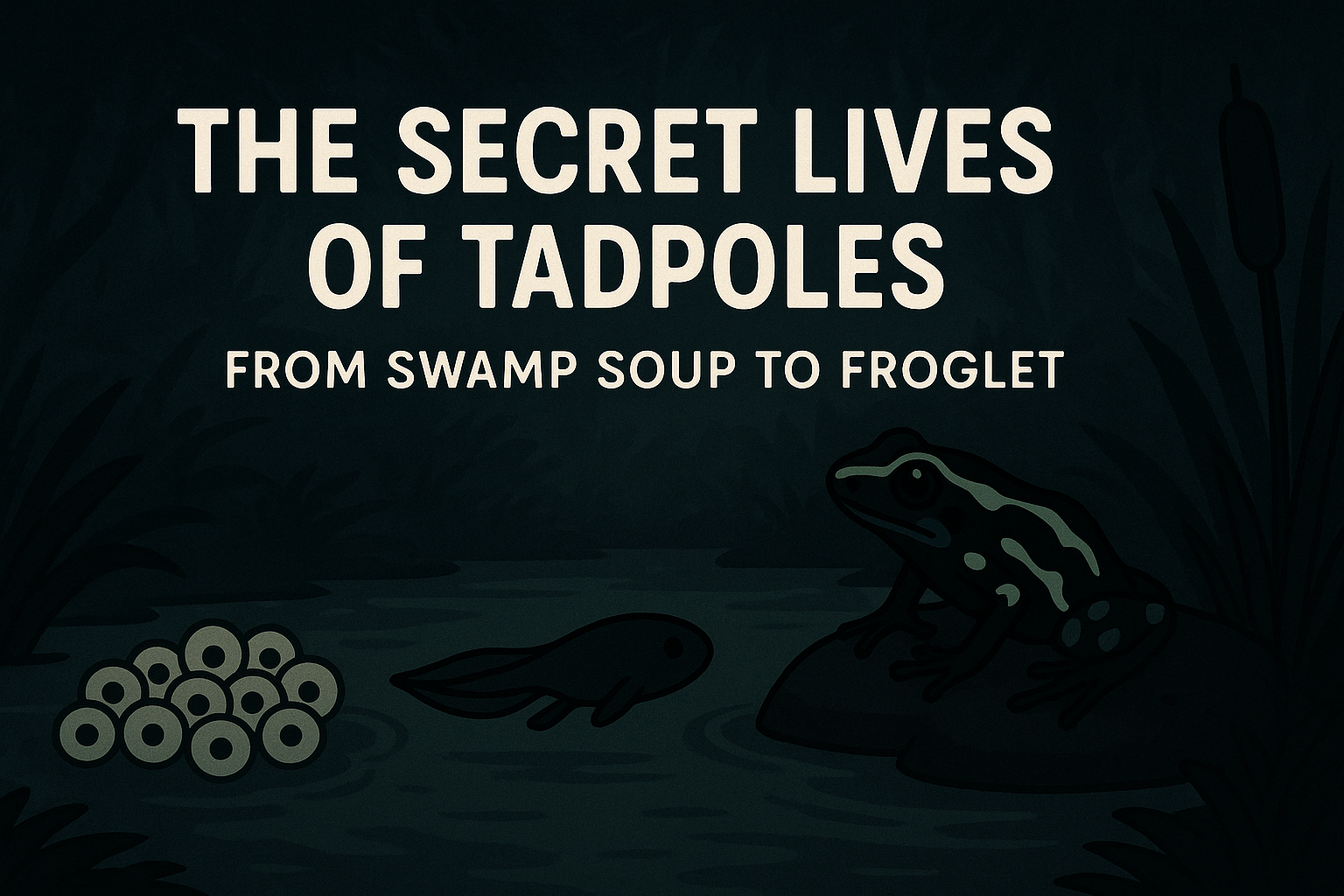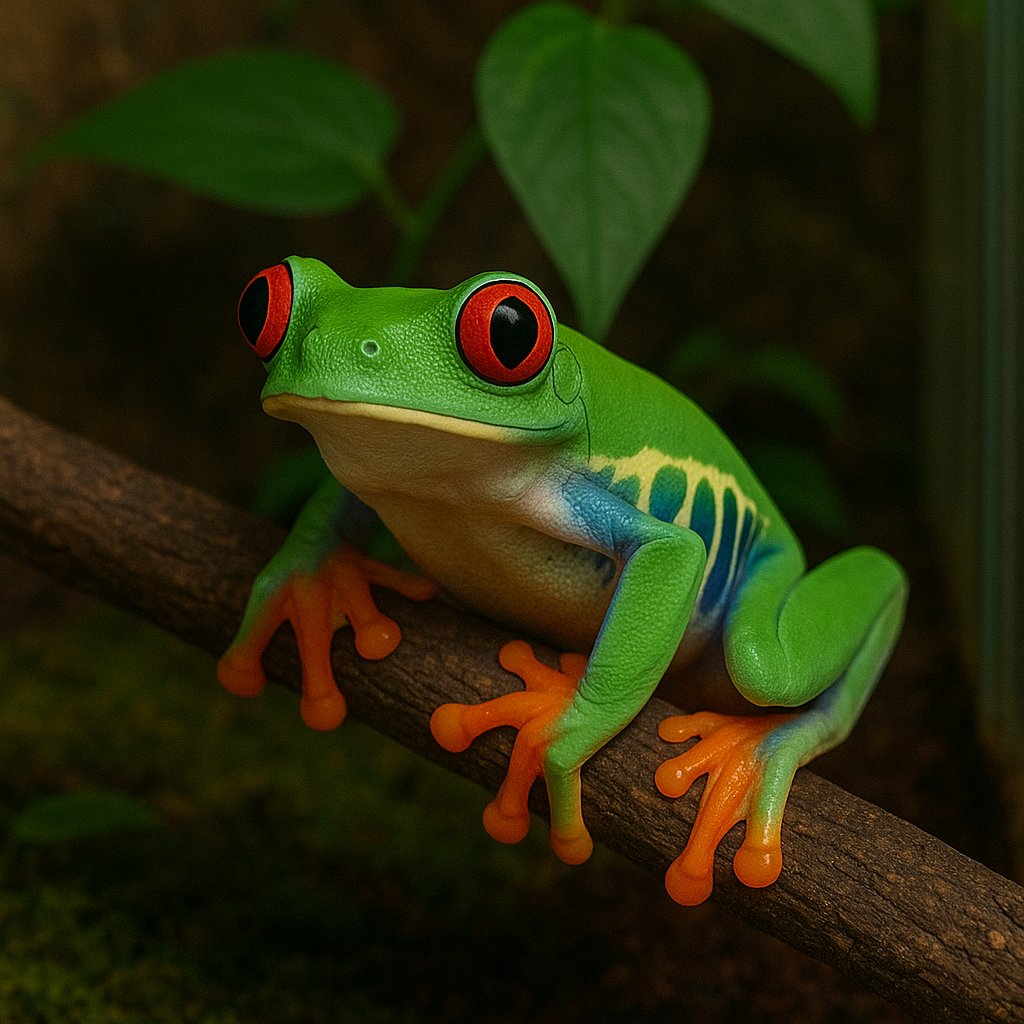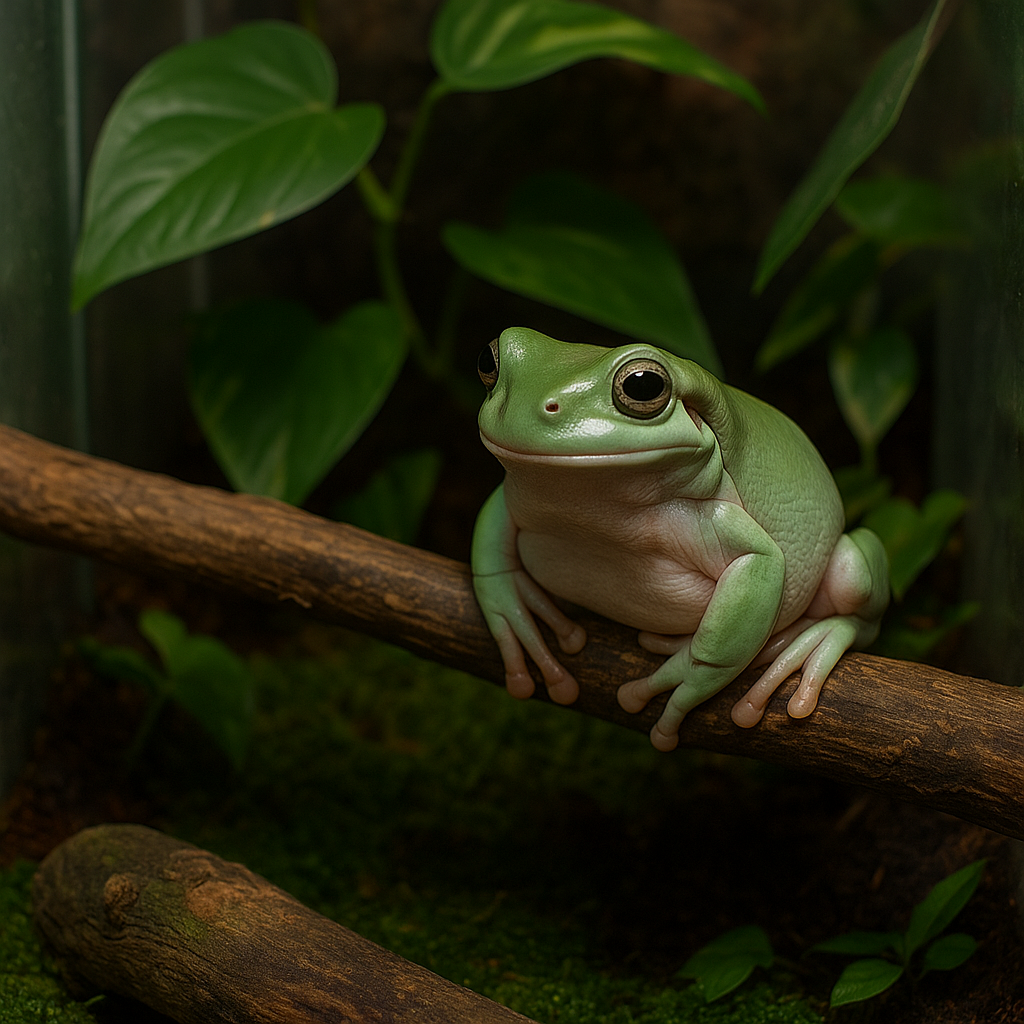There’s something properly magical about peering into a leaf-filled water bowl and spotting a tiny comma-shaped creature wiggling around. Tadpoles are the often-overlooked middle act in the dart frog drama — not quite eggs, not quite froglets, but packed with weird behaviours and secret needs.
Most keepers get their first clutch by accident. You spot the eggs clinging to a bromeliad leaf or tucked under a coconut hut and suddenly, you’re a parent. So what happens next?
What Do Dart Frog Tadpoles Look Like?
At first, they’re just black blobs with tails. Dart frog tadpoles don’t have legs for weeks, and they’re not always the most exciting thing to watch. But give it time. As they grow, you’ll notice their guts, gills, and even their tiny eyes moving about.
They range in colour from near-black to a mottled grey, depending on species. Some, like Dendrobates tinctorius, have pale bellies. Others are almost invisible in leaf-stained water.
How Long Does It Take for Tadpoles to Become Froglets?
In the UK, with room temps averaging 20–22°C, you’re usually looking at 60–90 days. Warmer setups (with temps around 24–26°C) can speed this up slightly, but too hot and you risk developmental issues.
Each species has its own pace:
- D. tinctorius: ~75 days
- Ranitomeya spp.: ~90–120 days
- Phyllobates: Can be quicker, depending on temp and diet
Raising Tadpoles in a Bioactive Setup vs Cups
Some keepers leave them in their broms. Others pull them for rearing in cups or tubs. There’s no single “correct” method — but here’s the breakdown:
Rearing Cups (or 35mm film tubs)
- Easy to monitor and feed
- Helps avoid cannibalism in some species
- Good control over water quality
Bioactive Water Features
- Mimics natural conditions
- Great for display tanks with visible water areas
- Can be risky if predators (like isopods) nip at eggs or tads
You’ll need to decide based on your setup and species. Ranitomeya, for example, often do best individually.
What Do Tadpoles Eat?
Here’s where most people panic. They’re not algae-eaters like goldfish fry. Dart frog tadpoles are omnivorous and need protein, not just “tadpole food” from the pet shop.
Top Feeding Options in the UK:
- Repashy Soilent Green – reliable and easy
- Crushed fish flakes – cheap, but check ingredients
- Boiled lettuce or spinach – if desperate, but not ideal
- Microworms or infusoria – for tiny tads
Overfeeding is worse than underfeeding. Cloudy water = rot = death. Feed tiny pinches every 1–2 days, and siphon waste weekly.
Water Quality and Temperature Tips
If you’re using tap water in the UK, dechlorinate it — Seachem Prime is popular. Better yet, use RO water re-mineralised with something like Salty Shrimp GH+.
- pH: 6.0–7.0
- Temp: 22–26°C
- Change water weekly (25–50%)
Watch for red streaks or bloating — signs something’s wrong.
When Do Legs Appear?
Back legs pop out first, usually around the halfway mark. Once front legs emerge, it’s time to lower the water level and provide something to climb on — cork bark, moss, or even a tilted bit of plastic.
This stage (called metamorphosis) is fast — they can drown if stuck without a perch.
Moving from Water to Vivarium
Once they absorb their tail and start hopping, move them to a grow-out vivarium. Keep it simple:
- Damp sphagnum or leaf litter
- Few hiding spots (but not too open)
- Daily misting
- Fruit flies and springtails
Don’t toss a froglet straight into a full-on display tank. They need time to learn to hunt and build strength.
Common Questions from UK Keepers
Can I leave tadpoles in the tank with adults?
Generally, no. Adults might ignore eggs but will eat freshly morphed froglets.
Do I need a heater?
Most UK homes don’t need extra heating, but a heat mat on a thermostat can help maintain consistency in colder months.
How many tadpoles can I raise together?
Depends on species. Tinctorius can often share space, Ranitomeya should be separate.
Internal Links
- How to Build a Dart Frog Vivarium in the UK
- Raising Dart Frogs: UK Options That Work
- Bioactive Setup for Beginners



